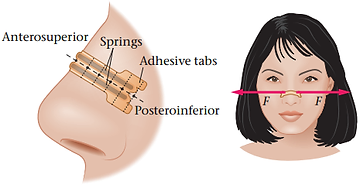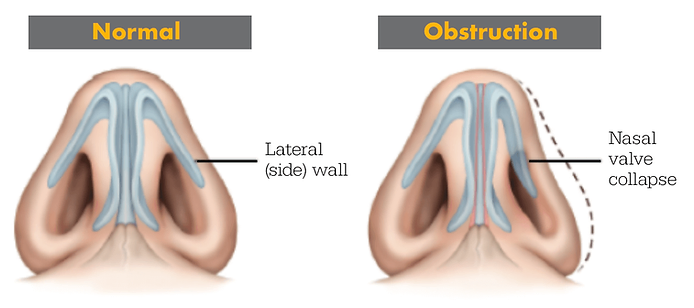A nasal dilator is a narrow strip of flat plastic, with an adhesive on one side that is folded over the soft part on the nostrils such that it exerts a slight springing action to spread the nostrils.
Multiple published studies have reported the opening of the nostrils significantly reduces snoring.
As with a lot of fitness fads, a direct correlation between a published study in sedentary individuals and an aspect of exercise physiology was made. In this case, restricted airflow during exercise.
The Nose is Obstructed During Exercise, But We Have a Mouth.
At rest, most people breathe through their nose because the velocity of airflow is low enough that air resistance is low. Once exercise starts, increased nasal “flaring” results in an immediate 30% reduction in airflow resistance. As exercise intensity increases, there is a need for higher ventilation. At some point during the increase in ventilation, the airflow through the nasal passage creates a negative pressure during inspiration and the opening of the nose begins to collapse.
At this point, nasal breathing is abandoned in favour of oral breathing.
Theoretically, the prevention of the nasal collapse by the dilator strips might mean an individual could breathe through their nose at higher exercise intensities and therefore improve exercise performance.
Do they work?
Science says no.
While the strips do decrease nasal resistance and have been shown to slightly reduce oxygen consumption during submaximal exercise, all of the published studies conclude there is no evidence to support enhanced performance. Once oral breathing occurs, the nasal strips lose all relevance.






